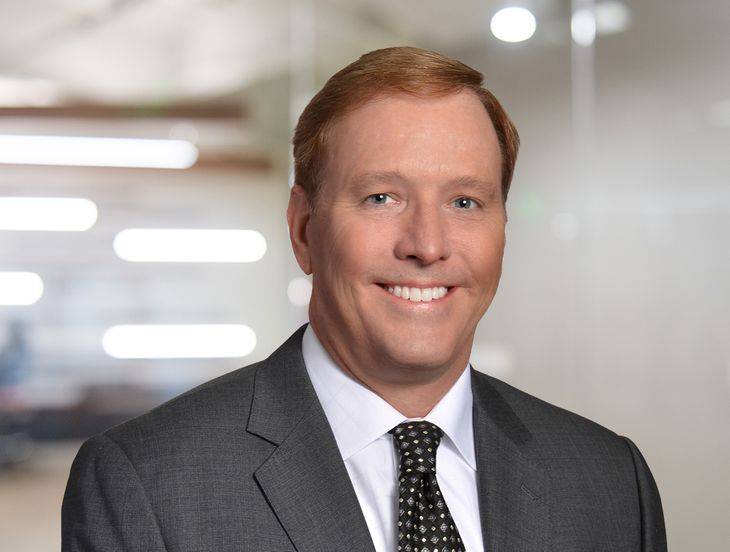SCOTUS Predictions: Blockbuster Decision Will Dismantle Workplace Regulations
Insights
2.01.24
The Supreme Court is set to shake up the workplace world by taking away a great deal of power from federal agencies – including the regulators who oversee many of the nation’s labor and employment laws. That’s according to the majority of FP attorneys offering their predictions on a pair of critical SCOTUS cases that could have a surprisingly outsized impact on your workplace. From labor relations to wage and hour law, from workplace safety to immigration – and far beyond – you should start preparing for a seismic shift in the way federal authorities regulate your workplace. Here’s an overview of what you need to know and detailed predictions from our firm’s thought leaders.
The Legal Doctrine on the Chopping Block
Forgive us if you feel like you’re in a law school class – we promise this will be quick and painless. The Chevron doctrine, established by SCOTUS 40 years ago, essentially says that courts should defer to a federal agency’s position on the law when a statute is open to interpretation.
- Congress has passed all sorts of laws that dictate how employers should operate their workplaces.
- But because statutes can’t possibly include details on every single aspect of the law, Congress also created federal agencies to oversee the statutes more closely. The agencies then provide specific and detailed guidance on how the laws should be applied.
- If the statute is in any way ambiguous – if two different reasonable people can interpret it in two different ways – that opens the door for federal agencies to step in and take control under the Chevron doctrine.
- They can issue regulations to resolve the ambiguity – which very often take the law in a direction that many suspect Congress never intended.
And remember, the agencies are led by regulators who are installed by whoever happens to control the White House. This means the interpretations often tilt the landscape back and forth every few years, giving employers whiplash when trying to build compliance programs to follow the shifting regulations.
How Does This Impact the Workplace?
You might not even realize how much of your daily life as an employer has been molded by federal agencies that have used the Chevron doctrine to mold their agenda. Here are just a few examples:
- Wage and Hour: The Department of Labor has issued rules on the so-called overtime rule, the tip pooling and tip credit rules – and just finalized a new rule, which is set to take effect in a few months, that will make it far harder to classify workers as independent contractors.
- Labor Law: The National Labor Relations Board (NLRB) has re-introduced “quickie” elections to accelerate the time period between union petitions and elections, and also revised its “joint employer” rule to make it easier for workers to be considered employees of more than one entity.
- Discrimination/Harassment: The Equal Employment Opportunity Commission (EEOC) has issued a number of regulations that shape not only employers’ compliance measures but also workplace litigation. The Age Discrimination in Employment Act (ADEA) and Americans with Disabilities Act (ADA) are often cited as prime examples of statutes with overbroad rules.
- Workplace Safety: The Occupational Safety and Health Administration (OSHA) recently issued a broad electronic recordkeeping rule and has also proposed a game-changing walkthrough rule that would permit union representatives to accompany safety inspectors during facility walkarounds (even in non-union settings) – just to name a few.
- Non-Competition: Until last year, most employers didn’t pay attention to the concept that federal regulators would – or even could – regulate the employee defection arena. But the Federal Trade Commission (FTC) blindsided the nation by proposing a rule that would effectively ban most non-competition agreements.
- Pay Equity: The EEOC has signaled an interest in returning to the short-lived pay data reporting requirement from a few years ago that required employers to turn over compensation information in an attempt to tackle pay equity issues.
- Immigration: Much of the nation’s immigration policy is carried out through regulation, especially those impacting the workplace. The Department of Homeland Security is heavily involved in creating regulations and adjudicating employment-based immigration applications, for example.
- Affirmative Action: The Office of Federal Contract Compliance Programs (OFCCP) has pushed broad interpretations of its regulations to govern federal contractors, including an expansive and ever-changing approach to compensation and significant revisions to the audit scheduling letter. And some observers even go so far as to wonder whether the Executive Order that created the entire affirmative action system for federal contractors is an overbroad regulatory reach.
Caught in a Herring Dispute
Two cases have opened the door for an attack on the long-standing doctrine giving such authority to federal agencies – but they have nothing to do with workplace law. They involve a federal statute that requires fishing boats to have observers on board to help ensure the right number of fish and correct species are being caught.
Everyone agrees that’s what the law says. But a dispute arose when a federal agency said the fishing fleets needed to pay these observers and passed a regulation to that effect. The fishing operations argued that this rule goes too far, well beyond what the federal statute says, and that the government should pay for observers if it wants them there so badly.
Who should win the dispute when the statute is somewhat ambiguous? Under the Chevron doctrine, courts need to give federal agencies the final word. But the two cases at issue – Loper Bright Enterprises v. Raimondo and Relentless v. Dept. of Commerce – are set to change everything.
Agencies About to Be on a Tighter Judicial Leash
Many of our thought leaders think that the broad standard that currently gives agencies an immense amount of deference will be scrapped and replaced with a narrower test that keeps regulators on a tighter leash. Goodbye Chevron, and hello Skidmore.
- The Skidmore doctrine is another legal test used by courts in certain circumstances (such as when asked to interpret agency opinion letters, enforcement guidance, operating manuals, etc.). It affords agencies only a limited amount of freedom to operate.
- Based on what we heard at the January 17 oral arguments, most of our authors believe that courts will soon be directed to apply the Skidmore doctrine to all agency positions – including regulations.
- What will it mean? Courts will be told to only give deference to an agency’s regulations based only the persuasiveness of the actual underlying position taken by the agency. In other words, courts will soon have the wide latitude to put the regulations under a microscope and second guess an agency’s wisdom.
- If a court thinks an agency has overstepped its bounds and issued a rule that goes too far, we predict it will soon have the power to strike that rule down much more easily.
And this might not be the only weapon that courts will soon wield. We have started to see the reemergence of something called the Major Questions Doctrine in the last few years. Essentially, it allows courts to kill an agency’s regulation if they think the issue at debate is simply too big for an agency bureaucrat to decide and is instead something that Congress should handle. (If it sounds somewhat familiar, it’s the same theory used by SCOTUS to set aside OSHA’s broad emergency standard that would have required employers to require their workers to get the COVID-19 vaccine.)
SCOTUS Predictions
Our authors, representing some of the many areas where regulators have an outsized impact on the workplace, have the following predictions for the SCOTUS ruling. We expect to see a decision in mid-June 2024.
- Caroline Cheek (Workplace Safety) – 6-3 in favor of striking down Chevron. Justice Kavanaugh will author the majority opinion, joined by Justices Roberts, Thomas, Alito, Gorsuch, and Barrett. I think we could see Justice Barrett author a separate concurring opinion outlining how the opinion will affect previous decisions. Justice Sotomayor will author the dissenting opinion, joined by Justices Kagan and Jackson.
- Ralph Hua (Immigration) – 6-3 decision striking down Chevron (by a clear liberal and conservative split). The Court will introduce the Skidmore doctrine to all agency actions. Justice Gorsuch will author the majority opinion, and Justice Sotomayor will author a dissent.
- Randy Coffey (Discrimination and Harassment) – 6-3 decision, dispensing with the so-called Chevron doctrine. I anticipate the Court will apply deference to agency decisions only to the extent that the basis for those decisions is persuasive (see Skidmore). But I also think the Court also may defer to agency interpretations of law to some extent if the agency can point to a clear Congressional delegation of authority, at least to the extent that the Major Questions Doctrine would not preclude such delegation. The majority decision will be authored by Justice Gorsuch, with a concurrence by Chief Justice Roberts; primary dissent by Justice Kagan, with potential separate dissent by Justice Sotomayor.
- Erik Laiho (Labor Relations) – Given the three-plus hours of oral argument (yes, I listened to it all) and the probing questions from the conservative justices, my prediction is also a 6-3 ruling overturning Chevron. Justice Gorsuch will write for the majority and Justices Kagan and Sotomayor will write their own dissents.
- Sheila Abron (Pay Equity and Affirmative Action) – I agree with Erik: a 6-3 decision overturning Chevron with Justice Gorsuch penning the majority opinion.
- Michael Elkon (Non-Competition) – A 4-3-2 breakdown in which: (a) Justices Thomas, Alito, Gorsuch, and Kavanaugh vote to overturn Chevron; (b) Justices Sotomayor, Kagan, and Jackson dissent; and (c) Justices Roberts and Barrett issue a concurring opinion limiting the scope of Chevron but not eliminating it entirely. The Roberts/Barrett opinion ultimately becomes the rule that lower courts must follow.
- Bryan Holbrook (Leaves and Accommodations) – As my colleagues have astutely noted, the safe bet here is a 6-3 decision with Justice Gorsuch writing for the majority. Ordinarily, I would say look for Chief Justice Roberts to cross over and have this fall at 5-4, but that would be difficult to square with: (i) his majority opinion in West Va. vs. EPA; (ii) his prior calls for Auer (which extends Chevron deference to an agency’s interpretation of its own regulation) to be reconsidered; and (iii) his suggestion that overruling Chevron would cause minimal disruption. So, while I agree it is unlikely Chevron survives and as a baseball guy who still loves a good “changeup,” I’m going with a 5-4 vote to overturn, with Justice Thomas writing for the majority and Justice Barrett joining the dissent. But I also would not be surprised if we saw a true “curveball,” with Chevron surviving 5-4 after both Justices Roberts and Barrett depart from their conservative colleagues and defer to the doctrine of stare decisis.
- Matt Korn (Wage and Hour) – While I imagine my colleagues will probably get this one right and we will see a decision overturning Chevron, there has to be at least one of us who plays the long-bet. Maybe it’s because I’m heading to Vegas for the Super Bowl, but I’m going to place my bet on a 5-4 decision preserving Chevron, albeit in a much more limited form. Given the opportunity to overturn Auer deference (related to agency guidance) in 2019 in the Kisor v. Wilkie decision, Justice Gorsuch noted that the “doctrine emerges maimed and enfeebled – in truth, zombified.” Despite the Court’s more conservative majority than 2019, I’m going to predict that the Court retains some very limited semblance of the Chevron doctrine, with Justice Barrett authoring the majority opinion joined by Justices Kagan, Sotomayor, Jackson, and Chief Justice Roberts. I realize I’m putting all my chips in on a longshot, but sometimes the Roulette ball lands on 00.
Conclusion
We will continue to monitor developments related to this case and provide an update when SCOTUS issues an opinion, so make sure you subscribe to Fisher Phillips’ Insight System to get the most up-to-date information. If you have questions, contact your Fisher Phillips attorney or the authors of this Insight.
Related People
-
- Sheila M. Abron
- Partner
-
- Caroline Cheek
- Associate
-
- J. Randall Coffey
- Partner
-
- Michael P. Elkon
- Partner
-
- R. Bryan Holbrook
- Partner
-
- Ralph Hua
- Partner - In Memoriam
-
- Matthew R. Korn
- Partner
-
- Erik M. Laiho
- Partner
Service Focus
- Government Contracting, Compliance, and Reporting
- Employee Defection and Trade Secrets
- Employee Leaves and Accommodations
- Employment Discrimination and Harassment
- Government Relations
- Immigration
- Labor Relations
- Litigation and Trials
- Pay Equity and Transparency
- Wage and Hour
- Workplace Safety and Catastrophe Management







